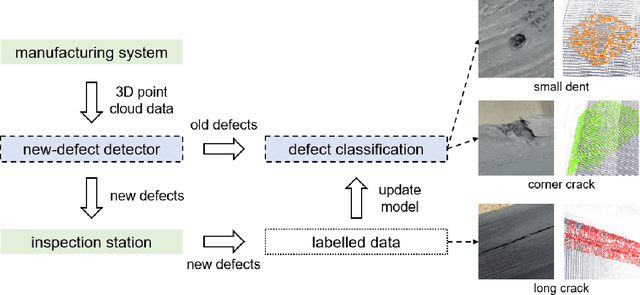Tzyy-Shuh Chang
Image-based Novel Fault Detection with Deep Learning Classifiers using Hierarchical Labels
Mar 26, 2024



Abstract:One important characteristic of modern fault classification systems is the ability to flag the system when faced with previously unseen fault types. This work considers the unknown fault detection capabilities of deep neural network-based fault classifiers. Specifically, we propose a methodology on how, when available, labels regarding the fault taxonomy can be used to increase unknown fault detection performance without sacrificing model performance. To achieve this, we propose to utilize soft label techniques to improve the state-of-the-art deep novel fault detection techniques during the training process and novel hierarchically consistent detection statistics for online novel fault detection. Finally, we demonstrated increased detection performance on novel fault detection in inspection images from the hot steel rolling process, with results well replicated across multiple scenarios and baseline detection methods.
A Continual Learning Framework for Adaptive Defect Classification and Inspection
Mar 16, 2022



Abstract:Machine-vision-based defect classification techniques have been widely adopted for automatic quality inspection in manufacturing processes. This article describes a general framework for classifying defects from high volume data batches with efficient inspection of unlabelled samples. The concept is to construct a detector to identify new defect types, send them to the inspection station for labelling, and dynamically update the classifier in an efficient manner that reduces both storage and computational needs imposed by data samples of previously observed batches. Both a simulation study on image classification and a case study on surface defect detection via 3D point clouds are performed to demonstrate the effectiveness of the proposed method.
 Add to Chrome
Add to Chrome Add to Firefox
Add to Firefox Add to Edge
Add to Edge